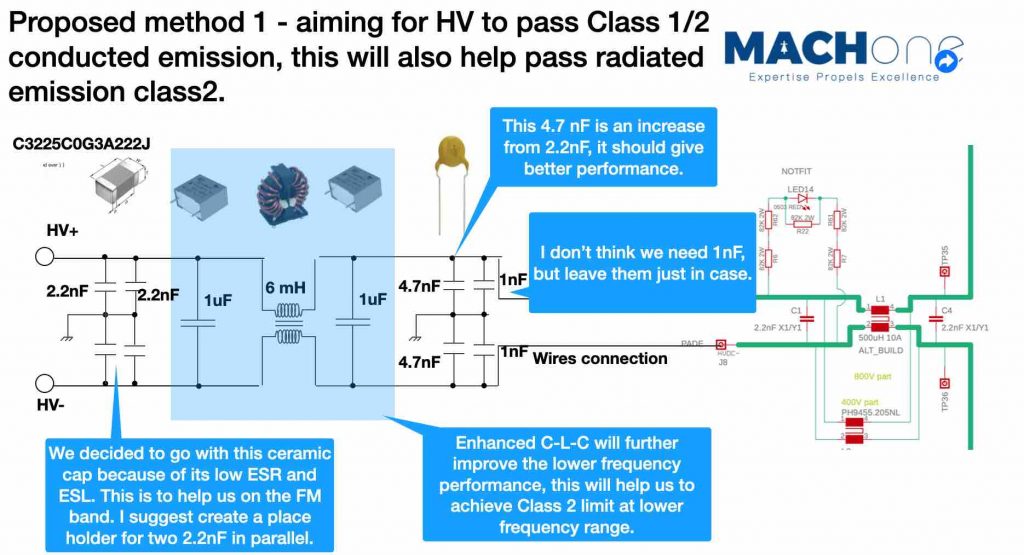Project: Troubleshooting Conducted and Radiated Emissions of a DC-DC Converter
Project Timeline: 1 working week
Project Progress:
This is yet another project involving a DC-DC converter designed for automotive applications. It’s no surprise that we’ve encountered numerous companies facing difficulties in meeting the stringent automotive EMC limits, especially when they’re relatively new to the industry. This scenario has become quite common in recent years. A design company might have established a strong reputation in fields like home appliances, medical devices, and industrial applications. However, when they venture into the electric vehicle sector, they often find themselves struggling to ensure EMC compliance.
In this particular case, the challenge is evident. Once a design is finalized and emissions turn out to be higher than allowed, rectifying the issue becomes extremely complex. Often, the best approach is to reevaluate the design right from the concept stage. Nonetheless, we’ve embraced the challenge and closely collaborated with the client. Our objective is to assist them in achieving EMC compliance with minimal alterations to their current design. Achieving this goal entails enhancing EMI filtering for both the input and output stages and implementing techniques such as product-level shielding and effective grounding.
As per the recent communication from our client, it’s evident that this project is nearing its completion, with their customer now accepting their product. It’s only fair to acknowledge that a substantial amount of credit belongs to their dedicated design team. They invested an incredible amount of time in testing and resolving issues. While we were there to provide them with tools and methodologies, it’s their team that effectively implemented the techniques and rigorously tested the product.
Due to the constraints of confidentiality, we are limited in sharing specific details. However, on the following page, you’ll find information regarding the front-end filter we designed. This filter was devised to effectively mitigate conducted emission noise on the input side.

It’s worth noting that a significant portion of the work was conducted at the customer’s site, where an EMC chamber was not available. In this scenario, we employed a specific method involving the measurement of cable common mode and differential mode currents. This approach holds particular significance since these currents play a vital role in both conducted and radiated emissions for products of this nature.
Interestingly, possessing this information proves to be exceptionally valuable. In fact, when the power supply unit connected to the Device Under Test (DUT) exhibits low EMI noise, this information can be utilized to accurately anticipate whether the conducted and radiated emissions will pass or fail. I’ve meticulously detailed these methods in the articles that follow.

To predict conducted emissions:
- http://emccompliance.co.uk/separate-common-mode-and-differential-mode-signals
- https://www.signalintegrityjournal.com/articles/2965-troubleshooting-low-frequency-common-mode-emissions
To predict radiated emissions: